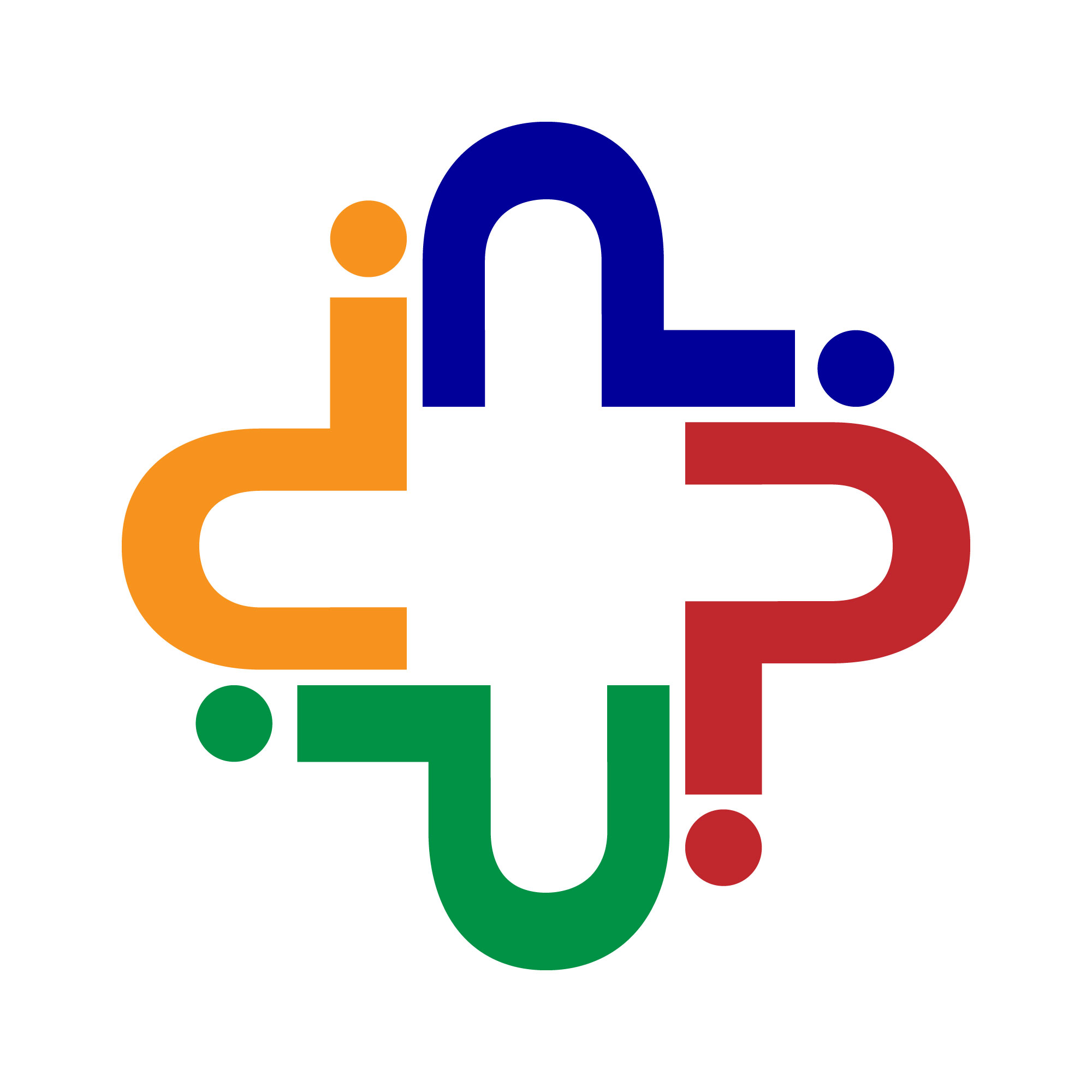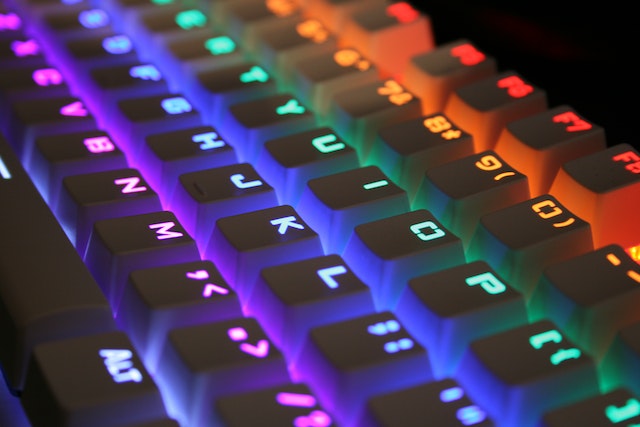Computer keyboards are essential input devices that enable us to interact with digital devices and systems. While most people are familiar with the standard alphanumeric keys, keyboards also feature various non-alphanumeric keyboard keys and symbols that have specific names and functions. In this comprehensive guide, we’ll explore the key symbols and names found on a typical computer keyboard, both on Windows and Mac layouts. We’ll also delve into special symbols that can be typed using keyboard shortcuts.
Example of a Keyboard keys
Before we dive into the details, let’s take a look at a typical computer keyboard layout for reference:
[Insert Image of a Computer Keyboard Layout]
Now, let’s explore the various categories of keys and their symbols and names.
Keyboard symbol Names:
| Keyboard Symbols | Name |
| ` | grave, grave accent, backtick, back quote |
| ~ | tilde |
| ! | exclamation, exclamation point, bang |
| @ | at, at sign, at symbol |
| # | pound, hash, number |
| $ | dollar sign, currency sign |
| % | percent, percent sign, parts per 100 |
| ^ | carat, hat, circumflex, exponent |
| & | and, ampersand |
| * | asterisk |
| ( | open bracket, open parenthesis, left parenthesis |
| ) | close bracket, close parenthesis, right parenthesis |
| ( ) | parentheses, brackets, round brackets |
| – | hyphen, minus, minus sign, dash |
| _ | underscore |
| = | equals, equal sign |
| + | addition, plus sign |
| [ ] | brackets, square brackets |
| [ | open bracket |
| ] | close bracket |
| { } | braces, curly brackets |
| { | open brace |
| } | close brace |
| \ | backslash, backward slash, reverse solidus |
| / | slash, forward slash, solidus |
| | | vertical pipe, pipe |
| ; | semicolon |
| : | colon |
| ‘ | apostrophe, prime, single quote |
| “ | quotation mark, double quotes |
| , | comma |
| . | period, decimal, dot |
| <> | angle brackets |
| < | less than |
| > | greater than |
| ? | question mark |
Listing of non-alphanumeric Keyboard keys
| Key/symbol | Explanation |
| Windows | PC keyboards have a Windows key that looks like a four-pane, wavy window. |
| Command | Apple Mac computers have a Command with a symbol resembling a cloverleaf. |
| Menu | PC keyboards also have a Menu key that looks like a cursor pointing to a menu. |
| Esc | Esc (escape) key. |
| F1 – F12 | What are the F1 through F12 keys? |
| F13 – F24 | Information about the F13 through F24 keyboard keys. |
| Tab | Tab key. |
| Caps lock | Caps lock key. |
| Shift | Shift key. |
| Ctrl | Control key. |
| Fn | Function key. |
| Alt | Alternate key (PC only; Mac users have an Option key). |
| Spacebar | Spacebar key. |
| Arrows | A dollar sign or generic currency. |
| Back Space | Delete or delete key. |
| Delete | Up, down, left, and right Arrow keys. |
| Enter | Enter key. |
| Prt Scrn | Backspace (or Backspace) key. |
| Scroll Lock | Scroll Lock key. |
| Pause | Pause key. |
| Break | Break key. |
| Insert | Insert key. |
| Home | Home key. |
| Page up | Page up or pg up key. |
| Page down | Page down or pg dn key. |
| End | End key. |
| Num Lock | Num Lock key. |
| ~ | Tilde. |
| ` | Acute, back quote, grave, grave accent, left quote, open quote, or a push. |
| ! | Exclamation mark, exclamation point, or bang. |
| @ | Ampersat, arobase, asperand, at, or at symbol. |
| # | Octothorpe, number, pound, sharp, or hash. |
| £ | Pound Sterling or Pound symbol. |
| € | Euro. |
| $ | Asterisk, a mathematical multiplication symbol, is sometimes called a star. |
| ¢ | Cent sign. |
| ¥ | Chinese/Japanese Yuan. |
| § | Micro or section. |
| % | Percent. |
| ° | Degree. |
| ^ | Caret or circumflex. |
| & | Ampersand, epershand, or and symbol. |
| * | Open brace, squiggly brackets, or curly brackets. |
| ( | Open or left parenthesis. |
| ) | Close or right parenthesis. |
| – | Hyphen, minus, or dash. |
| _ | Underscore. |
| + | Plus. |
| = | Equal. |
| { | Close brace, squiggly brackets, or curly brackets. |
| } | Pipe,, or vertical bar. |
| [ | Open bracket. |
| ] | Closed bracket. |
| | | Pipe, or vertical bar. |
| \ | Backslash or reverse solidus. |
| / | Forward slash, solidus, virgule, whack, and mathematical division symbol. |
| : | Colon. |
| ; | Semicolon. |
| “ | Quote, quotation mark, or inverted commas. |
| ‘ | Apostrophe or single quote. |
| < | Less than or angle brackets. |
| > | Greater than or angle brackets. |
| , | Comma. |
| . | Period, dot, or full stop. |
| ? | Question mark. |
Symbols on a Windows Keyboard keys
| Key | Windows |
|---|---|
| Alt or Option | Alt |
| Caps Lock | Caps Lock |
| Command | Cmd |
| Control | Ctrl |
| Delete, Backspace | Backspace |
| Escape, Cancel | Esc |
| Enter, Return | Enter |
| Function | Fn |
| Shift | Shift |
| Tab | Tab |
Symbols on a Mac Keyboard
| Key | Mac |
|---|---|
| Alt or Option | ⌥ |
| Caps Lock | Caps Lock |
| Command | ⌘ |
| Control | ⌃ |
| Delete, Backspace | Delete |
| Escape, Cancel | Esc |
| Enter, Return | ⏎ |
| Function | fn |
| Shift | ⇧ |
| Tab | Tab |
Special Symbols Using Keyboard Shortcuts Keys
Keyboard shortcuts can be used to input special symbols that serve various purposes, including currency symbols, editing marks, mathematical symbols, and more.
Symbols using Mac shortcuts
| Symbol | Name | Mac Shortcut |
|---|---|---|
| £ | pound, pound sterling | Option + 3 (US) Shift + 3 (UK) |
| $ | dollar or currency | Shift + 4 |
| ¢ | cent | Option + 4 |
| € | euro | Option + Shift + 2 (US) Option + 2 (UK) |
| ¥ | Japanese yen, Chinese yuan | Option + y |
| ∞ | infinity | Option + 5 |
| § | section, silcrow | Option + 6 |
| ¶ | paragraph, pilcrow | Option + 7 |
| ™ | trademark | Option + 2 |
| © | copyright | Option + g |
| ® | registered trademark | Option + r |
| • | bullet | Option + 8 |
| º | degree | Option + Shift +8 |
| ± | plus or minus | Option + Shift + = |
| ≠ | not equal sign, inequality | Option + = |
| ≈ | approximately | Option + x |
| ∑ | upper case sigma, summation | Option + w |
| π | lower case pi | Option + p |
| ∏ | upper case pi | Option + Shift + p |
| √ | square root, radical | Option + v |
| % | percent, parts per 100 | Shift + 5 |
| ‰ | per mille, parts per 1000 | Option + Shift + r |
| ÷ | division | Option + / |
| ≤ | less than or equal to | Option + , |
| ≥ | greater than or equal to | Option + . |
| † | dagger, cross | Option + t |
| ‡ | double dagger, double cross | Option + Shift + 7 |
| … | ellipsis | Option + ; |
| – | en dash | Option + – |
| — | em dash | Option + Shift + – |
| ∆ | upper case delta, change | Option + j |
| Ω | upper case omega | Option + z |
| µ | lower case mu, mean, micro | Option + m |
Symbols using Windows shortcuts
| Symbol | Name | Windows |
|---|---|---|
| £ | pound, pound sterling | Alt + 0163 |
| $ | dollar or currency | Shift + 4 |
| ¢ | cent | Alt + 0162 |
| € | euro | Alt + Ctrl + E |
| ¥ | Japanese yen, Chinese yuan | Alt + 0165 |
| ∞ | infinity | Alt+236 |
| § | section, silcrow | Alt + 0167 |
| ¶ | paragraph, pilcrow | Alt + 0182 |
| ™ | trademark | Alt + 0153 |
| © | copyright | Alt + 0169 |
| ® | registered trademark | Alt + 0174 |
| • | bullet | Alt + 0149 |
| º | degree | Alt + 0176 |
| ± | plus or minus | Alt + 177 |
| ≠ | not equal sign, inequality | Alt + 8800 |
| ≈ | approximately | Alt + 247 |
| ∑ | upper case sigma, summation | Alt + 931 |
| π | lower case pi | Alt + 960 |
| ∏ | upper case pi | Alt + 227 |
| √ | square root, radical | Alt + 251 |
| % | percent, parts per 100 | Shift + 5 |
| ‰ | per mille, parts per 1000 | Alt + 0137 |
| ÷ | division | Alt + 247 |
| ≤ | less than or equal to | Alt + 243 |
| ≥ | greater than or equal to | Alt + 8805 |
| † | dagger, cross | Alt + 0134 |
| ‡ | double dagger, double cross | Alt + 0135 |
| … | ellipsis | Alt + 0133 |
| – | en dash | Alt + 0150 |
| — | em dash | Alt + 0151 |
| ∆ | upper case delta, change | Alt + 30 |
| Ω | upper case omega | Alt + 234 |
| µ | lower case mu, mean, micro | Alt + 23 |
Understanding the symbols and names of computer keyboard keys is essential for effective communication and efficient use of your digital devices. Whether you’re using a Windows or Mac keyboard, knowing how to type special characters and symbols can enhance your typing and text input capabilities. So, the next time you’re typing with symbols or wondering where a particular key is located, refer to this guide to unlock the key symbolism on your computer keyboard.
FAQ Questions:
- What is F1 F2 F3 F4 F5 f6 f7 f8 f9 f10 F11 F12?
The function keys F1 through F12 are keys on a computer keyboard that typically serve various functions depending on the software or operating system being used. Here’s a general overview of what these function keys often do:
1. F1: Frequently used for accessing help and documentation within software applications.
2. F2: Often used for renaming files or folders in many operating systems.
3. F3: Commonly used to initiate a search function in file explorers and web browsers.
4. F4: In some applications, it can be used to open a dropdown list of options or addresses.
5. F5: Typically used to refresh or reload a web page or document.
6. F6: Often used for navigating between different elements in a window or form.
7. F7: Used for functions like spell-checking in word processing software.
8. F8: In Windows, it’s often associated with boot options during startup.
9. F9: The function of F9 can vary widely between different software applications.
10. F10: Frequently used to activate menu bars in some applications or to access boot options during startup in Windows.
11. F11: Commonly used to toggle full-screen mode in web browsers.
12. F12: Often used to access developer tools or debugging options in web browsers and programming environments.
- What are keyboard keys and their functions?
A computer keyboard serves as an essential input tool for entering characters and commands into a computer system. This input device functions through the act of pressing buttons, or keys, to transmit data to the computer. Its primary purpose is text input, and it usually comprises keys designed for individual letters, numerical digits, and special characters. In addition to these, it also includes keys dedicated to specific functions or actions.
- What are the 12 keys in a keyboard computer?
A standard computer keyboard typically consists of more than 12 keys. Here are the 12 primary categories of keys on a standard keyboard:
1. Alphanumeric Keys: These include letters (A) and numbers (0-9) used for typing text and numbers.
2. Function Keys (F1-F12): These perform various functions depending on the software or operating system.
3. Navigation Keys: These include arrow keys (Up, Down, Left, Right) for navigating within documents and interfaces.
4. Control Keys: Keys like Ctrl (Control) and Alt are used in combination with other keys to perform commands and shortcuts.
5. Spacebar: Inserts spaces between words and elements in text.
6. Enter/Return Key: Confirms input or moves to the next line or field.
7. Backspace Key: Erases the character to the left of the cursor.
8. Tab Key: Indents or moves the cursor to the next field.
9. Shift Keys: Modify the case of letters and access additional symbols.
10. Caps Lock Key: Toggles between uppercase and lowercase letters when active.
11. Windows/Command Key: Opens the Start menu (Windows) or accesses system functions (Mac).
12. Alt Key (Alternate): Modifies the function of other keys to execute commands.
- What is Ctrl-A to Z used for?
Ctrl (Control) combined with various alphabetical keys (A to Z) on a computer keyboard is used for executing a wide range of keyboard shortcuts and commands in various software applications and operating systems. Each Ctrl + [Letter] combination serves a specific function or action, enhancing efficiency and productivity for users. Here’s a brief overview of some common Ctrl + [Letter] shortcuts:
– Ctrl + A: Selects all text or items in a document or folder.
– Ctrl + C: Copies the selected text or items to the clipboard.
– Ctrl + X: Cuts the selected text or items (removes and copies to the clipboard).
– Ctrl + V: Pastes the contents of the clipboard at the cursor’s location.
– Ctrl + Z: Undoes the previous action or keystroke, often used for “Undo.”
– Ctrl + Y: Redoes the previously undone action, often used for “Redo.”
– Ctrl + S: Saves the current document or file.
– Ctrl + P: Opens the print dialog for printing the current document.
– Ctrl + F: Opens the Find dialog for searching within documents or web pages.
– Ctrl + N: Opens a new document or window in many applications.
– Ctrl + O: Opens an existing document or file.
– Ctrl + W: Closes the current window or tab.
– Ctrl + Q: Quits or exits the application (on some platforms).
- What is the F12 key used for?
The F12 key on a computer keyboard serves various functions depending on the software or operating system being used. Commonly, its primary functions include: Developer Tools, Save As, Debugging, Accessing Menus, Custom Functions, Gaming
- What is called F1 to F12 keys?
The F1 to F12 keys on a computer keyboard are commonly referred to as “Function Keys.” These keys are labeled F1 through F12 and are typically located in a row at the top of the keyboard, above the alphanumeric keys. Each Function Key, when pressed individually or in combination with other keys like Ctrl or Alt, serves specific functions or commands depending on the software or operating system being used. These functions can include opening help menus, executing commands, toggling settings, and more.
- Time Difference Between India and United States - April 28, 2024
- How to Turn Off Sticky Keys on Windows 10 - April 27, 2024
- What is a Hotmail? - April 26, 2024




